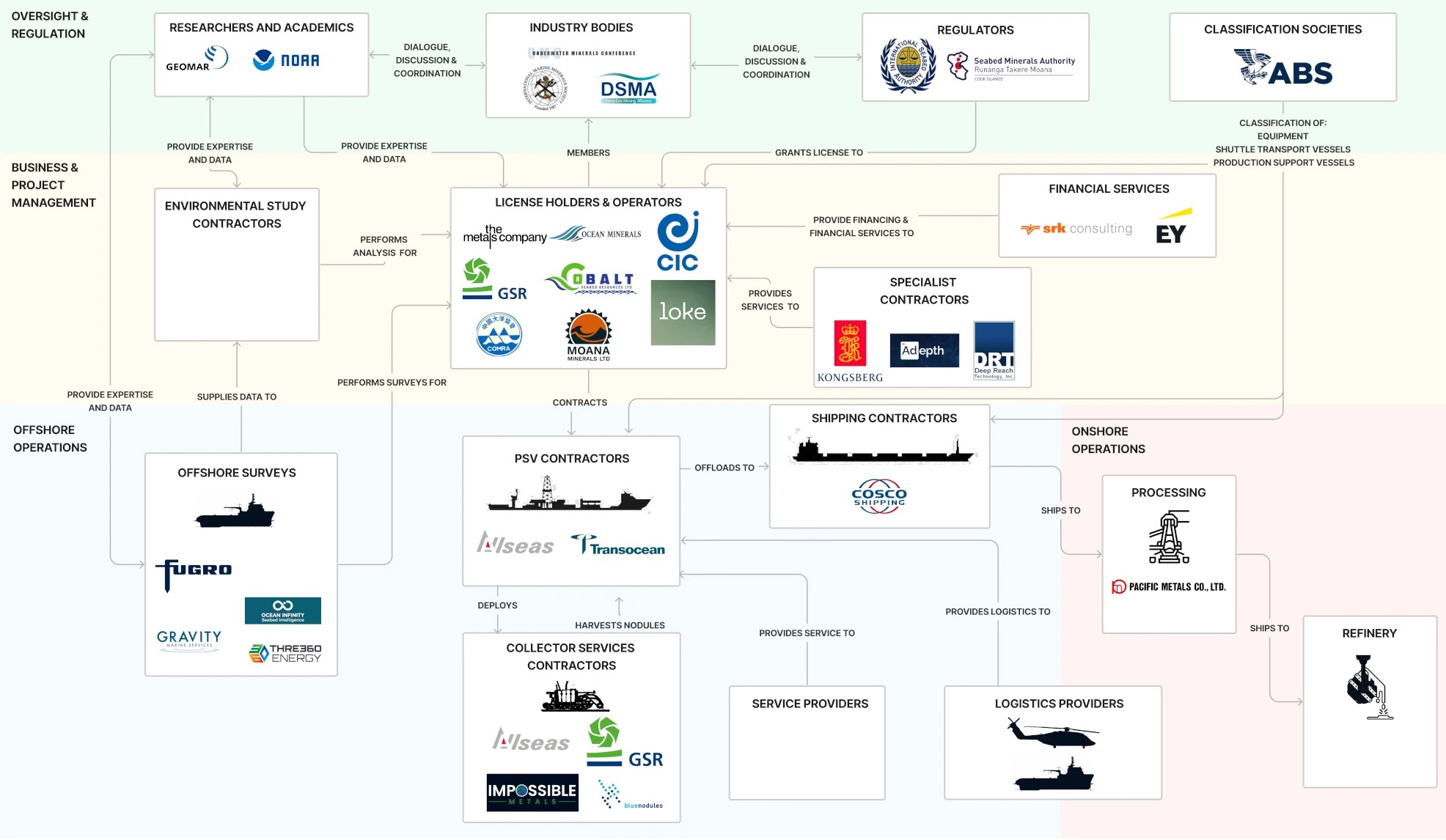Overall Ecosystem Diagram

Click to enlarge
The ecosystem diagram above illustrates how each company in the deep sea mining and subsea mining industry interacts with each other. It's a simplification of a complex industry, so for more information, please see the company page which describes each company with more nuance and detail.
The broad sectors are:
- License Holders and Operators
- Environmental Study Contractors
- Specialist Contractors
- Financial Services
- PSV Contractors
- Collector Services Contractors
- Offshore Survey Contractors
- Logistics Providers
- Service Providers
- Shipping Contractors
- Logistics Providers
- Processing Facilities
- Refineries
Not-for-Profits
A wide range of not-for-profit entities provide critical research, support and governance to the deep sea mining industry. In particular, government and international agencies provide regulation of resources and issue licenses; research and academic institutions provide critical research, data, exploration cruises and technical expertise; industry bodies bring together the various groups, individuals and organizations to align on needs, best-practises and general industry direction.
Regulators
Regulators fall into two different categories depending upon the location of the resources being regulated, and therefore the international law that applies. Generally, resources that lie within the Exclusive Economic Zone of a coastal country are regulated by that's country's subsea minerals regulator, whilst resources that lie in The Area are regulated by the International Seabed Authority (ISA) under UN mandate. Some important regulators include:
The ISA is a UN mandated organization whose mission is to authorize and control development of subsea mineral operations on the international seabed, and to protect the ecosystem of the seabed, ocean floor and subsoil. As part of this mandate, the ISA is responsible for issuing subsea mining regulations and issuing contracts.
The ISA's main focus has been on the Clarion-Clipperton Zone, where it has issued a number of licenses to different contractors.
Researchers and Academics
Various research groups, government agencies, universities and institutions have funded or provided scientific work for mapping and understanding subsea minerals, the subsea ecosystem, flora and fauna, and the impacts of deep sea mining. Some important groups include:
The National Oceanic and Atmospheric Administration is a US scientific and regulatory agency. Their remit is broad and includes, amongst other things, monitoring oceanic conditions, charting the seas, and conducting deep sea exploration. A number of NOAA expeditions have provided valuable bathymetric and subsea data, biodiversity studies, and water column sampling.
Business - License Holders & Operators
The main "business" components of deep sea mining revolve around the license holders, who act as project managers for the various workscopes.
License holders have acquired licenses from the relevant regulatory bodies (ISA, SBMA, etc) and committed to a program of scientific research, exploration cruises, baseline surveys, and other work in order to support them applying for a mining licence. This application typically requires a thorough Environmental and Social Impact Assessment, along with Environmental Permits. This work requires the coordination of multiple groups, researchers, specialists, and equipment.